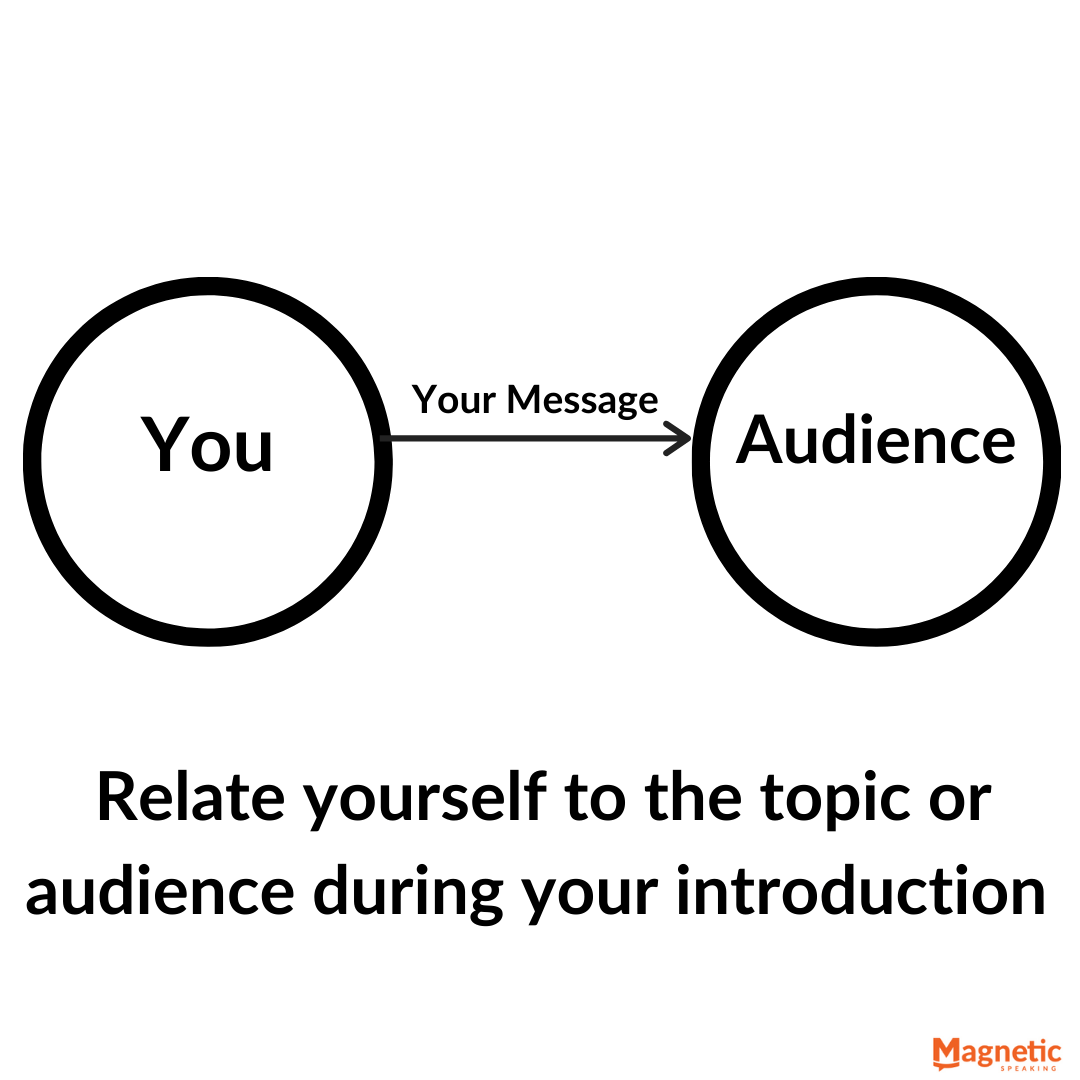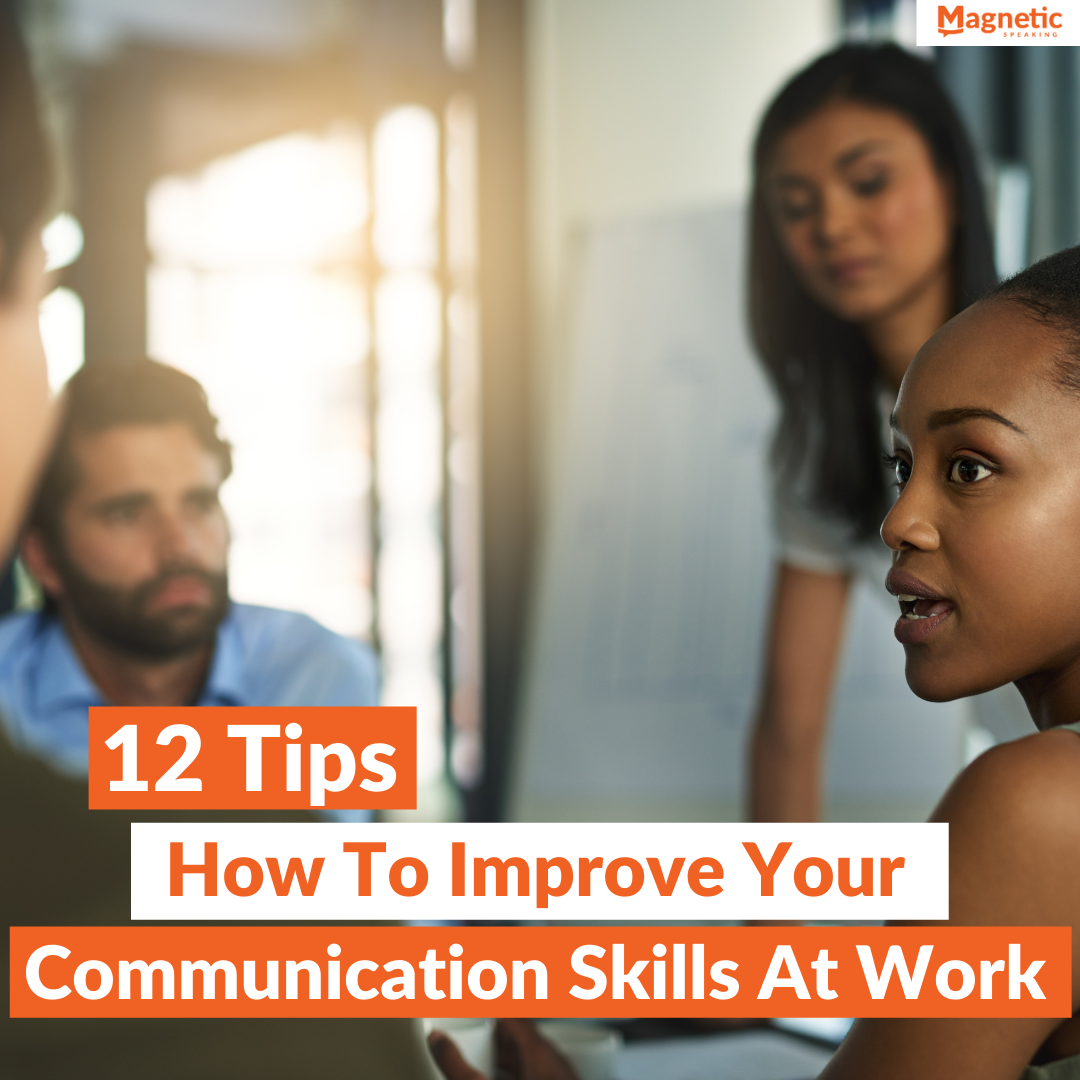Do you stress out about the start of your presentations?
You are not alone. The start of the presentation is critical. It can mean the difference between confusion or clarity, trust or mistrust, and boredom or interest.
It’s good to think of your introduction as the onramp to a Highway. You want the intro to get people safely and gently on the highway before you start speeding along.
Sometimes it’s better to learn what to avoid than what to do. So let’s go through the 6 crucial mistakes you must avoid when starting a presentation and what to do instead.
The 6 Mistakes to Avoid at the Start of a Presentation
Mistake #1: Speaking to “everyone”
Presenting means you speak to a group. Right?
Wrong!
If you try to speak to a group, then you will subconsciously try to please everyone. You will say one sentence to Jack, one sentence to Jill, and another to Jay. As a result, your thoughts and message get fragmented. In an effort to speak to everyone, you end up speaking to NO One.
This is a problem you face when creating a new product – if you don’t have a specific user in mind, you’ll create a product that doesn’t stand out to anyone. In the same way, your presentation will lack focus and concreteness.
What to Do Instead: Keep one specific person in mind when presenting.
Rather than speaking to a general audience, go narrow. Who is one person that would benefit from this presentation? Can you imagine them? We call this the Persona (imaginary) or Person (if it’s a real person you know) of the presentation.
Thinking of that person as you start your presentation. It will make a big difference in how you start. This is especially relevant and helpful with Virtual Presentations. Try it and let us know in the comments.
Mistake #2: Using your story to gain credibility
“Good morning everyone. I’m Angie and I’m on the Product team here at Company x. I’ve been working in Product the last 10 years now and have a Master’s in Computer science and a background in logistics management as well. I’ve worked on lots of different projects that…”
Have you ever done this before? Most professionals are used to introducing themselves in a presentation by giving a background on themselves. Notice the 2 issues by doing this right in the beginning: 1) the focus is now on you, not the audience, and 2) it seems like you’re trying to gain credibility.
You don’t need to gain credibility in this way – you’re already in front of the group presenting! You have situational authority. Sure in some contexts it’s good to provide some of your credentials but in most contexts you don’t.
So, what should you do instead?
What to Do Instead: Relate yourself to the topic or audience

For most presentations at work, the trick to introducing yourself is by relating yourself to the topic or to the audience, rather than just saying your name and role or your name and long backstory in a talk.
Instead of that example above, you might say, “I’m Angie and I’ve been on the Product team at Company X for the past 3 years. And just like all of you, I spent many years of my career wondering how I could switch from Engineering into Product Management. So that’s why I’ll be talking about how to make that switch today.”
By just adding one sentence, you can make your personal story relatable and compelling! So always ask yourself: Why do you care about this topic? How do you relate to your audience?
And keep in mind, if you’re doing a presentation consistently and everyone knows you, it’s okay to skip this part entirely!
Mistake #3: Jumping right into the content
Too many professionals jump into the weeds right away. If you want to sound like an executive, please don’t do that.
Your colleagues and management attend way too many meetings per week. After a while, everything starts blending. It’s your job to orient them by giving them the big picture and context first.
If you get asked to “give more context” many times, then you have not on-ramped people properly, and you’ll need to ease off from jumping into the weeds too fast.
On the other hand, watch out for giving too much background (always calibrate based on your audience). This is where strategic communication comes in.
What to Do Instead: State the reason you are presenting, the benefits, and the agenda every time

If there’s one thing we spend the most time on with 1-on-1 coaching clients, it’s leadership communication—your ability to “up-level” what you’re saying to a strategic point of view.
When starting a presentation, let the audience know why you’re there by stating your presentation topic. It sounds obvious, but it’s something you might forget at the moment if you’re nervous.
After that, add why you’re talking about that particular topic — the key benefits for the team, company, or audience. This approach alone will have you stand out from everyone else.
By on-ramping people with the right context, you will be influencing, not just presenting. And the context doesn’t have to be too long. Just add 1-3 benefits of why this is important.
In addition to setting the context, you can walk through the agenda. What are the 2, 3, or 4 subtopics you want to address?
This lets the audience know what to expect so that they focus on the content and not wonder where your presentation is headed. 2-4 subtopics are plenty. Remember, you want to engage your audience, not overwhelm them. If you have more, then reorganize the structure, so it’s easier to digest.
Here’s a full example: “I’m here to talk about the Product Roadmap for our consumer devices segment today (why you’re here). We want a major release by the end of the quarter so that we can capitalize on the momentum we’ve created with our pre-launch events earlier this year (why this is important). So I’ll be talking about 1) The Top Features for the release, 2) Major issues we expect and 3) Main responsibilities of our teams.”
Adding these essential elements, you’ll avoid speaking “in the weeds” and come across as confident and organized.
Mistake #4: Coming in with the same level of energy as everyone else
One of my speaking coaches once said that I should be a “Power House.”
When I asked what that means, he said that I have to generate energy, not use energy when I am in front of the audience.
After trying that for 15 years, I can say that his advice has been instrumental in making me stand out as a professional speaker all these years.
The same applies to you. If you want to stand out when presenting in front of your colleagues, avoid having equal or less energy than them. Remember that leaders are like power stations; they provide energy and not suck energy from the group.
What To Do Instead: Come in at a higher energy level than your audience

The reason you want to come in with more energy than your audience is so that you catch their attention. Then you can keep them engaged easier once your higher energy has captured their focus.
This higher energy does need to be calibrated and not over the top. In the Delivery Bootcamp, we train professionals to have 1 -5 % higher energy than the audience. That’s what you should shoot for right from the start of your presentation.
Mistake #5: Looking away from the audience
Have you noticed someone starting a presentation without looking at the audience? You might be doing this too.
Head turned down, up, away from the camera (if virtual), or looking back at the slides on the screen behind you.
It feels disengaging and turns the audience off from the beginning. The audience may feel as though they can ignore what you’re saying because it’s not important.
What you’re subtly conveying is that what you have to say isn’t significant. Whether it’s true or not doesn’t matter but that’s the perception the audience is getting.
What To Do Instead: Immediately connect to an individual or look at the camera lens (if virtual)

This is important because it’ll keep the audience engaged right from the beginning. Looking at your audience keeps the social pressure on them to look back at you…
When someone is looking at the camera (or at a single person or two) then the audience is aware of this and they feel like they have to be engaged with what that person is saying.
So next time you’re starting a presentation, keep connected to one individual or by literally looking at the camera lens (if virtual).
Mistake #6: Not getting audience participation
Another common mistake professionals do is treat their presentation like a data dump without getting any engagement from the audience.
This is not advised because then the audience may feel like you’re talking at them rather than being there speaking with them.
What To Do Instead: Use enrolling questions, polls, exercises, etc.
Instead of jumping in the presentation you can do an enrolling question, which will get the audience’s participation right at first.
What is an enrolling question? Very simple..
An enrolling question is a question that is a yes or no answer. An example would be: “how many of you are familiar with our vendor x?”
It’s an easy and obvious question.
That’s one way you can get engagement right from the start. It’s not the only way but is a good starting point. If you want to learn more about enrolling questions, be sure to check out the Delivery Bootcamp.
A summary of the 6 mistakes people make at the start of a presentation and how to avoid them:
Mistake #1: Speaking to a “general audience”
What to Do Instead: Keep a specific person in mind
Mistake #2: Giving a long backstory about yourself
What to Do Instead: Relate yourself to the topic or audience
Mistake #3: Jumping right into the content
What to Do Instead: State why you’re here, the benefits, and the agenda
Mistake #4: Coming in with the same level of energy as everyone else
What To Do Instead: Come in at a higher energy level
Mistake #5: Looking away from the audience
What To Do Instead: Immediately connect to an individual or look at the camera lens (if virtual)
Mistake #6: Not getting audience participation
What To Do Instead: Use enrolling questions, polls, exercises etc
For the next steps, just pick one or two of these that you think you need help in the most. Then apply the “what to do instead” techniques and keep practicing only those one or two for several weeks until you feel like you have it.
Then improve on your next speaking technique.
If you try to do too much at once you’ll just overload yourself, thus diminishing your performance.




